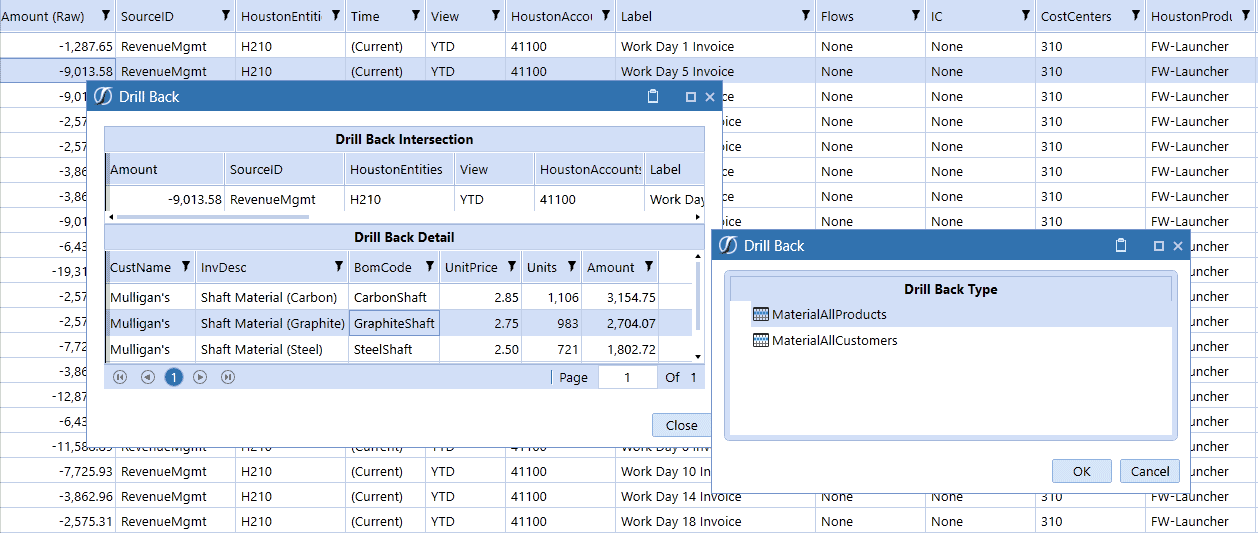Data integration is one of the most critical aspects of CPM solutions. Why? Because the effectiveness of your budgeting, planning, consolidation and reporting processes is fully dependent on getting timely and accurate data from GL/ERP, HCM and other systems.
But what does that really mean? There are a variety of CPM system solutions in the market but there is a vast difference between one that is loosely integrated versus fully integrated with your transactional systems. Lack of full integration creates a multitude of problems including manual steps, wasted resources and time, risk of errors, poor financial data quality, lack of traceability and complete auditability. If your CPM solution doesn’t fully integrate with your source systems it’s not a solution.
The Integration Variable – No Integration, Loose Integration or Full Integration
In most cases, CPM and ERP systems tend to remain separate as siloed applications – each with their own purpose but not working together. There is often little to no connectivity between the two systems and users are forced to resort to the dreaded “swivel chair” approach for data entry by manually retrieving data from one system, manually massaging the data, then loading it into another system, which is highly inefficient and prone to multiple errors.
In other cases, the CPM and ERP system or multiple ERP systems, which is often the case in large enterprises, are integrated but it’s not a full integration. Meaning, the two systems are connected and compatible. Data from the ERP system is loaded into the CPM system for reporting and analysis, , but there is no visibility back into the transactional data. It’s a one-way bridge.
Full integration goes beyond just compatibility to include a seamless connection and the ability to drill back and drill through from the CPM platform all the way down to transactional detail in the source system. The process should be fully automated, provide 100% traceability with audit trails for data, metadata and process changes. If your CPM software can’t do that then it’s not fully integrated with your ERP system.
Completely Guided and Simple End User Experience
The drill back and drill through end user process is not delivered in a clunky 3rd party tool, portal or interface. The OneStream drill back and through all happens in the comfort of the OneStream XF standard user interface so the end user never has to exit OneStream to see the transactional details of the ERP. Ease of use is paramount to ease of adoption and acceptance by end users who demand simplicity.
Because our integration connector can move from any table to any other table, the series of clicks that would normally be necessary for drilling through to a specific transaction in an ERP system can be augmented with a one-click process in OneStream to get the most relevant details immediately. We have one customer that needed to go from OneStream data directly to cancelled checks which would have been 20+ clicks in the ERP. In OneStream, we simplified their process and give them a menu of choices on the drill through that quickly took the end user directly to the cancelled checks.
OneStream Drill options do not stop at just displaying data in data grids. Other options include, displaying a web page via a passed URL, displaying files, text messages and more.

OneStream Offers Full Integration
Today’s CFOs and controllers need to manage their critical, enterprise-wide financial data and processes as effectively as possible. That data needs to be timely, accurate and easily accessible for insightful reporting and analysis to maintain a competitive edge. In order to do that, their corporate performance management solution needs to be robust, scalable and provide full integration with their ERP system(s).
OneStream provides full integration with seamless connections to over 150 unique GL/ERP systems, on-premise or in the cloud. This includes full integration with SAP, PLeX, Microsoft Dynamics, Oracle E-Business Suite, JDEdwards, PeopleSoft, Infor and others. The OneStream platform can incorporate all industry standard integration capabilities including, but not limited to, ODBC, RESTful and SOAP web service API’s, and custom 3rd party communication tools. With 100% visibility from reports to source, all financial data is clearly visible and easily accessible. Financial processes can be automated, reports more accurate, and the enterprise can utilize their core financial and operational data using a single interface. With full integration to the ERP system, the enterprise can simplify business processes, reduce errors and inefficiencies and Get Back to Business.
Hundreds of OneStream customers are already reaping the benefits of full data integration, enabling their CPM processes to work seamlessly with their GL/ERP systems and processes. Here’s an example of the benefits they are achieving.
“By automating SAP feeds using OneStream connectors, users can now have the visibility and drill back capabilities to detailed transactions within SAP, something we simply could not accomplish in our previous environment. OneStream XF delivers more detailed reporting and analytics in one unified product and application,” Rahul Nanvati, Director of Financial Systems, Evoqua.
– Terry Shea
As VP of Solution Engineering at OneStream, Terry Shea brings over fifteen years of data quality and integration experience to the organization. A well-known expert in the industry, Terry has designed and implemented data integration solutions for hundreds of large, multi-national companies providing his customers with organizational efficiency and cost savings.
Get Started With a Personal Demo



